The London Omnibus

One of Shillibeer's first Omnibuses heading along the New Road towards the Bank Junction
On the morning of July 4, 1829, a large crowd gathered outside the Yorkshire Stingo pub in Paddington, by New Road, now named Marylebone Road. The reason for this large gathering was to see the first two omnibuses leave for the Bank Junction, in the city of London. The route that was chosen was along Marylebone Road, Euston Road, Pentonville Road, City Road, Moorgate and Princess Street. This new service was provided by Mr George Shillibeer, who was born in 1797 at Tottenham Court Road, London. Shillibeer had seen this kind of operation while working in Paris in 1825 for M. Lafitte, who, besides being a banker, was also the proprietor of the world's first omnibus that Shillibeer had been assisting with the building. The omnibus had been started by Jacques Lafitte, in Paris, in 1819 during the reign of Louis XVIII, and had been a popular success. Shillibeer had been a midshipman in the British Navy. He quit the service to work at Hatchett's in London's Long Acre, Covent Garden, to learn coachbuilding. After his training he took over premises in Bury Street, Bloomsbury, where he intended to build a new vehicle called an omnibus, although many people of the times referred to them as Shillibeers, and later on as simply buses.

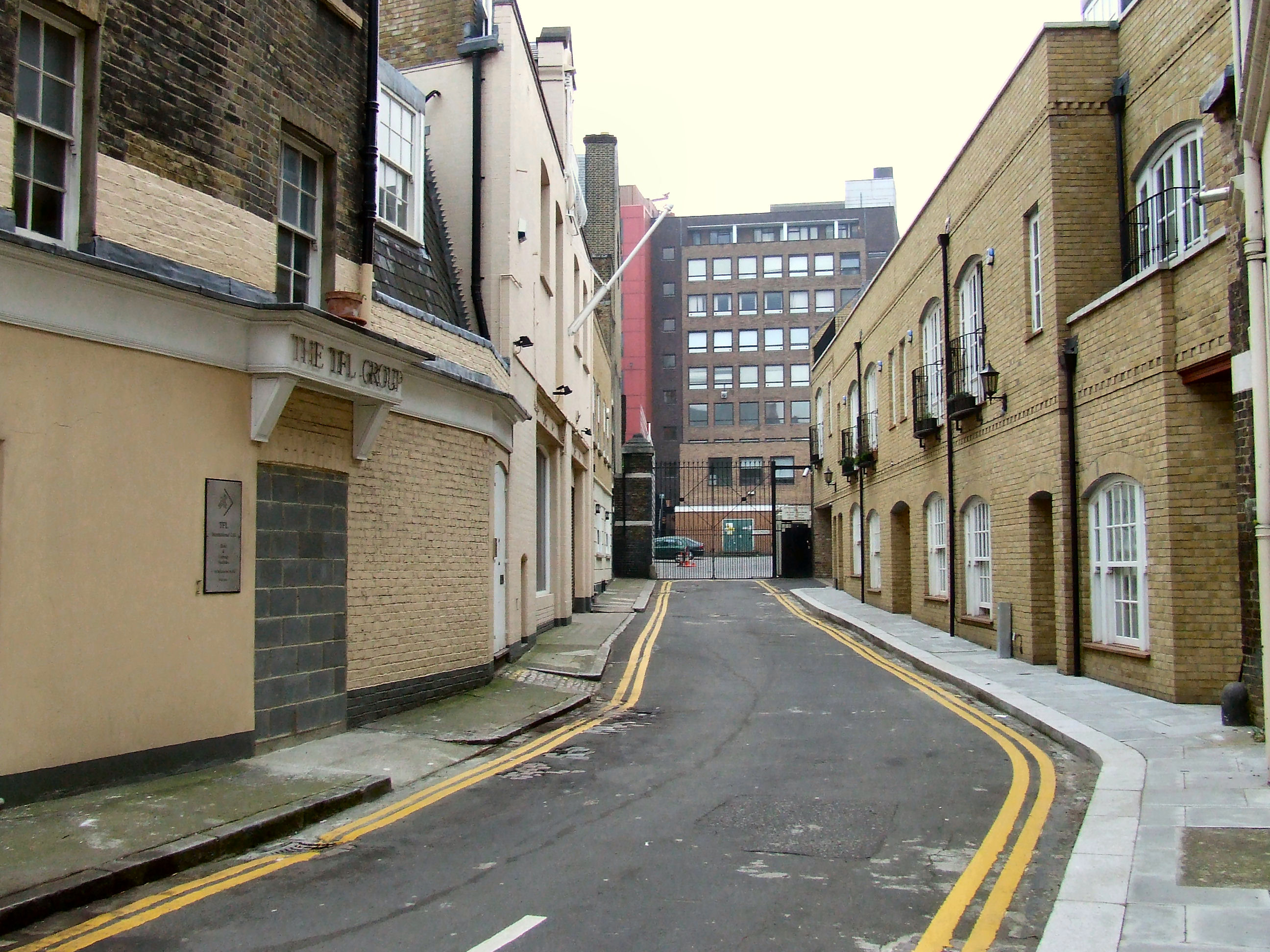
Shillibeer Place, Marylebone. This was where the carriages and horses were stabled.
These first buses carried twenty-two passengers, all inside. The fare from Paddington to the Bank was a shilling (five pence), half-way was sixpence (two and a half pence). Newspapers and magazines were provided free of charge. The first few conductors employed were friends of Shillibeer's from the navy, who were attired in 'blue cloth uniforms, cut to the style of midshipman's'. As trade picked up Shillibeer was taking £100 per day, and naturally, his buses soon spread all across London. The first company to copy this service was the Post Office, and soon others competed for passengers, Shillibeer renaming his buses as Shillibeer's Original Omnibuses.
In 1835 the railways were being introduced into London, so with competition growing, Shillibeer got in trouble with the Stamp and Tax office. Shillibeer was pushed out of the London Transportation network altogether and moved into building 'Shillibeer Funeral Coaches', and his name connected with buses became forgotten. He died at Brighton in 1866, at the age of sixty nine, and he is buried at
St Mary's church graveyard near to his home at Chigwell in Essex.
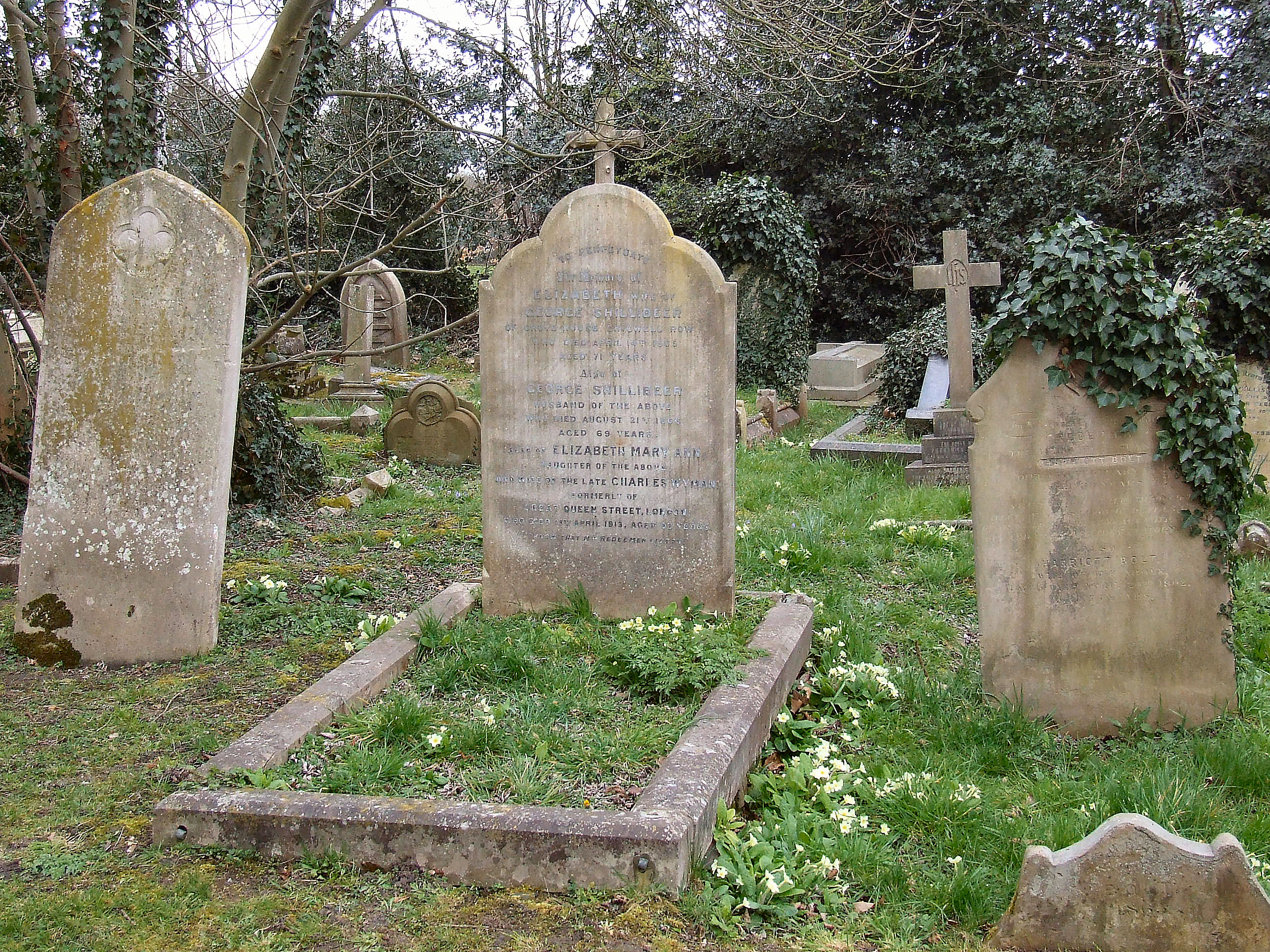
Final resting place of George Shillibeer and his wife Elizabeth, daughter Elizabeth Mary Ann Wyman.
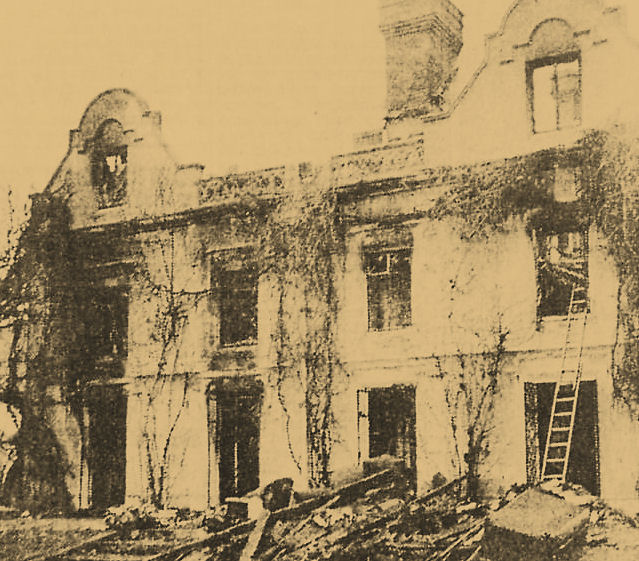
Grove House, Chigwell Row, the last home of George Shillibeer, also said to have once belonged to Sir Francis Drake, pictured during its sad demolition in 1964.
The rivalry with competing omnibus companies became so bad that in 1842 a driver was charged with manslaughter for running over and killing a man in City Road while racing another omnibus, and doing twelve miles an hour, a dangerous speed in a crowded thoroughfare with horses to stop. The offenders were fined only a few shillings and continued their subsequent behaviour.
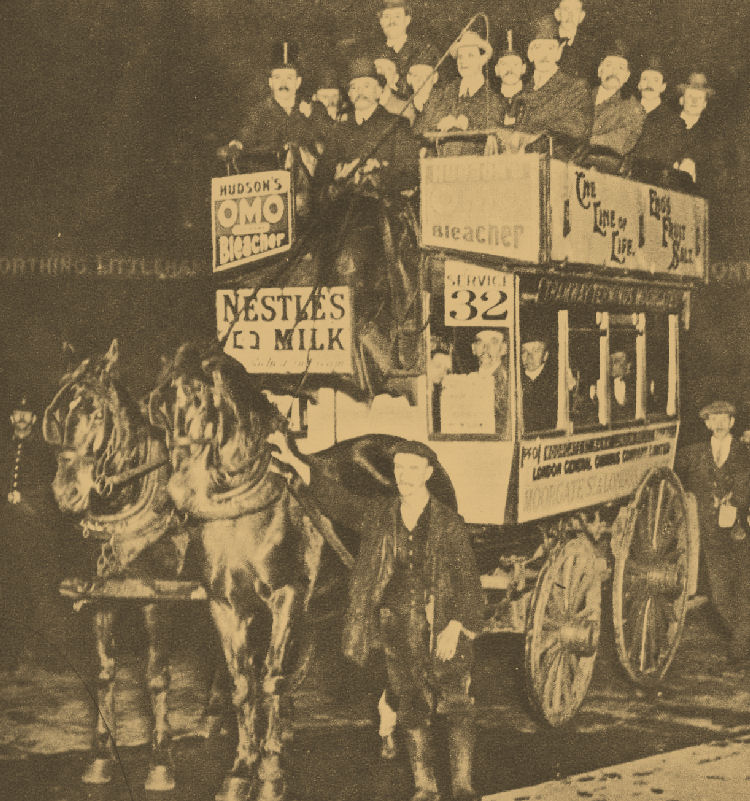
October 25th 1911 the last horse drawn omnibus made its way from London Bridge Station to Moorgate.
1933-1948
The origins of London Transport began by Act of Parliament on 13 April 1933 under the then Transport Minister Herbert Morrison. On 1 July 1933 the London Passenger Transport Board (LPTB) came into being, covering the "London Passenger Transport Area", (an area within a radius of 30 miles from Charing Cross, extending from Baldock in the north, to Brentwood in the east, Horsham in the south and High Wycombe in the west): in other words, outside the boundaries of Greater London.
1948 2005
1948: the LPTB responsibilities passed to the London Transport Executive (LTE), part of the British Transport Commission, which also controlled British Railways.
1963: LTE gave way to the London Transport Board, reporting directly to the Minister of Transport.
1 January 1970: The tube network and the Greater London area bus network passed to the London Transport Executive, reporting to the Greater London Council.
1984: London Regional Transport (LRT) was created, reporting to the Secretary of State for Transport. The London Regional Transport Act contained a provision for setting up subsidiary companies to run the Underground and bus services.
1985: the incorporation of London Underground Limited (LUL), a wholly-owned subsidiary of LRT.
1988: ten individual line business units were created to manage the tube network
2000: Transport for London (TfL) set up when the Mayor of London and the London Assembly were established.
2003: LUL transferred to TfL when the Private Finance Initiative (PFI) agreement was completed.
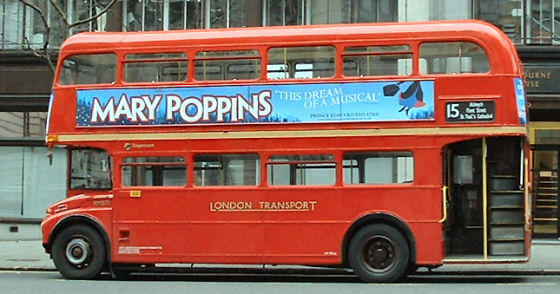
The famous Route Master bus the most loved bus of all, that ended service at the end of 2005.
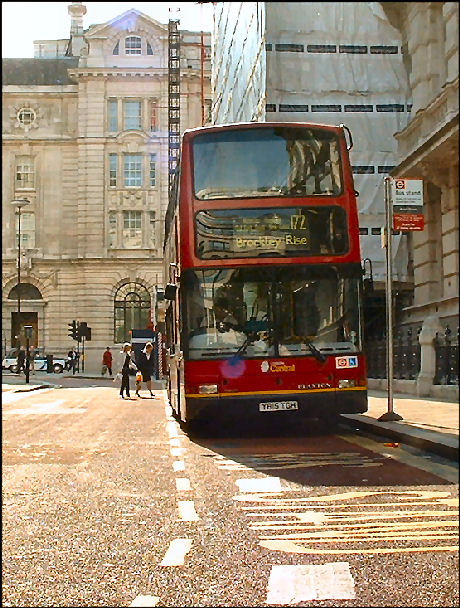
Modern square box bus.The New Boris Bus Unveiled
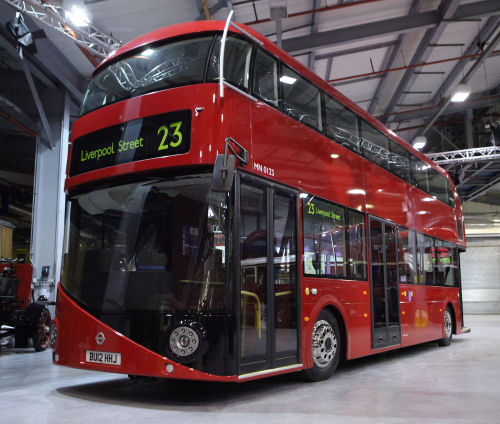
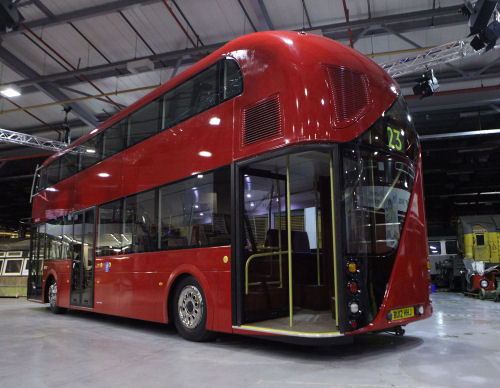
The bus will use the latest green technology. It will be 15 percent more fuel efficient than existing hybrid buses, and 40 percent more efficient than conventional diesel double-deckers and much quieter on the streets. The pioneering design makes use of lightweight materials, with glass highlighting key features and producing a light and airy feel inside the bus. An impressive glass 'swoop' at the rear and offside pick out the two staircases and provide a dramatic visual effect. An asymmetric design for the front-end completes the futuristic look.
<>/p>
Stylish, swooshing exterior The open platform is a defining feature, shared with the Routemaster of old, and allows the reinstatement of a hop-on, hop-off service. Three doors and two staircases will aid speedier and smoother boarding. The Mayor of London, Boris Johnson, said: 'This iconic new part of our transport system is not only beautiful but also has a green heart beating beneath its stylish, swooshing exterior. It will cut emissions, and give Londoners a bus they can be proud of, complete with cutting-edge design, and the freedom of an open platform. I expect to eventually have hundreds of these on London's roads, and for cities around the globe to be beside themselves with envy for our stunning red emblem of 21st century London.' Peter Hendy, London's Transport Commissioner, said: 'Designing and building a new bus exclusively for London is an exciting project to be working on and one of which we are all proud.' This beautifully designed, environmentally friendly vehicle built for the capital will be loved by Londoners for many years to come.' Mark Nodder, Group Managing Director of Wrightbus, said: 'This project is not just about evolution, it's about revolution. I think the design is genuinely groundbreaking; people are really going to stop and notice these buses on the streets of London.' Wrightbus and Transport for London (TfL) have been working with Heatherwick Studio as a collaborative design partner taking the lead on the styling of the bus to support Wrightbus in the design and development process.
London Time

Follow Us
The contents of this website are the property of knowledgeoflondon.com and therefore must not be reproduced without permission. Every effort is made to ensure the details contained on this website are correct, however, we cannot accept responsibility for errors and omissions.
© Copyright 2004 -
Contact Us | Advertise